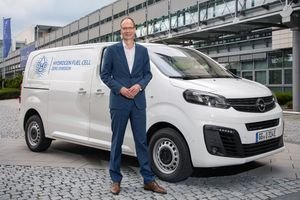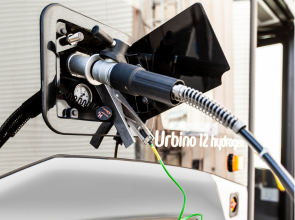The new Opel Vivaro-e Hydrogen will be launched later this year
The electric new zero-emission van features a hydrogen fuel cell drive with plug-in battery technologies without compromising on the space available compared to conventional drive technologies.

Opel aims to launch the emission-free Opel Vivaro-e Hydrogen van installed with a 45kW hydrogen fuel cell later this year. The first van is expected to be delivered to fleet customers as early as autumn.
The van would travel over 400 Km with a single filling of 6.1 cubic metres capacity of the three 700 bar hydrogen tanks made from carbon fibre. The hydrogen refuelling would take just three minutes. The new van will be available in two lengths, M (4,959 mm) L (5,306 mm). The payload can grow up to 1,100 kg and can be loaded on any side.
Michael Lohscheller, Opel CEO, said, “Hydrogen is a pioneering solution for an efficient energy system free of fossil fuels.”
Opel has over 20 years of experience in developing hydrogen fuel cell vehicles. Opel Vivaro-e Hydrogen, which is based on the already available battery-electric, combines benefits of zero emissions, high range and short refuelling stop.
The technology works in such a way that the fuel cell generates power from hydrogen and air through a catalytic converter which then drives the electric motor, emitting only water vapour.
For starting or accelerating, the 10.5 kWh lithium-ion battery is used to cover load peaks so that the fuel cell system operates under optimal operating conditions, resulting in increases in the service life.
The braking energy can be recovered and fed into the battery as electricity via the electric motor (generator) (recuperation). Due to its plug-in capability, the battery can also be charged externally if required so that the vehicle can travel 50 km purely battery-electric.
The new Vivaro-e Hydrogen is manufactured by Opel Special Vehicles (OSV) in Rüsselsheim, Germany. The whole Opel portfolio of light commercial vehicles is planned to be electrified this year, whereas Opel will offer an electrified version for every passenger car and commercial vehicle model by 2024.
